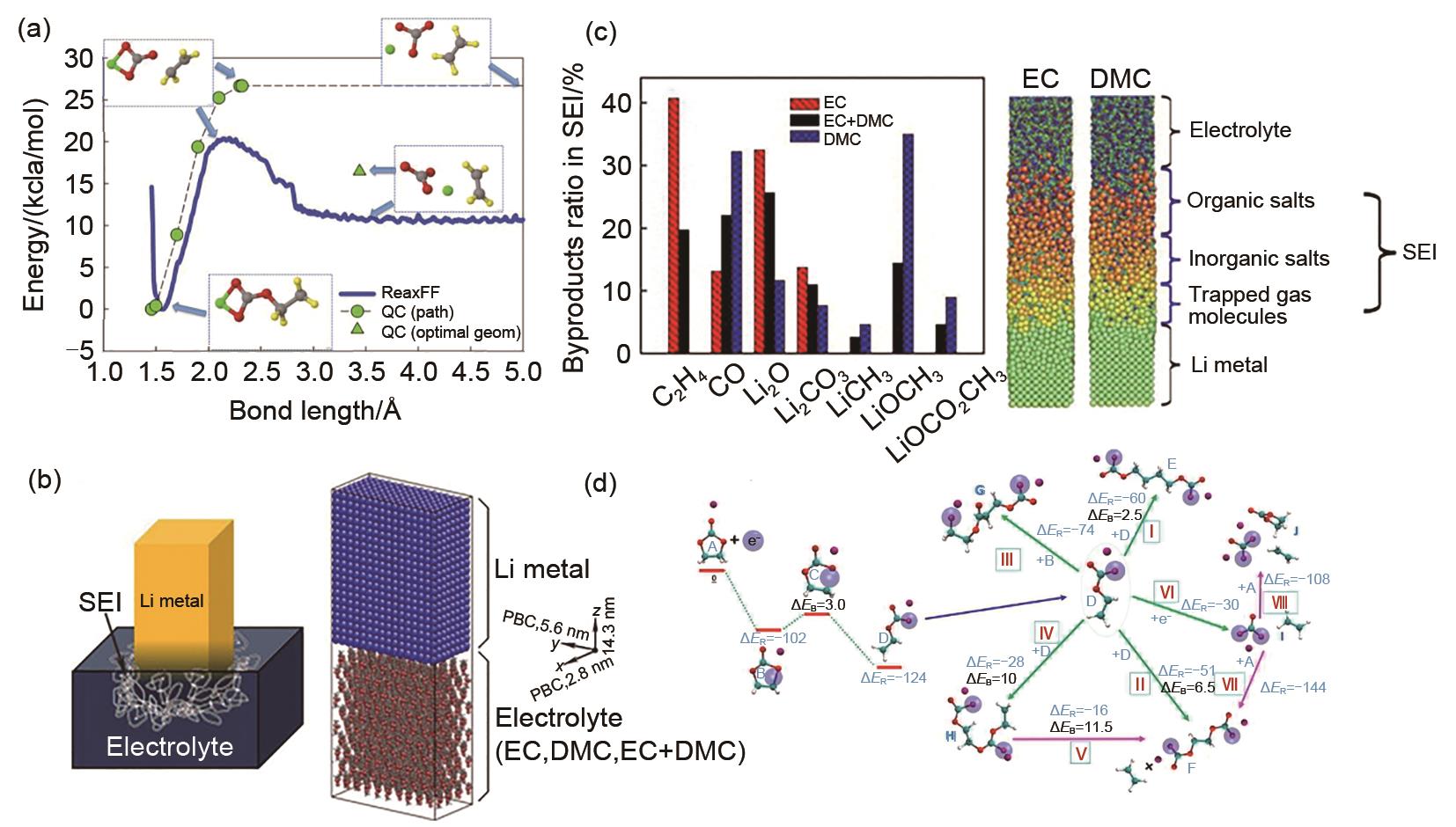锂离子电池SEI多尺度建模研究展望
|
|
张慧敏, 王京, 王一博, 郑家新, 邱景义, 曹高萍, 张浩
|
Multiscale modeling of the SEI of lithium-ion batteries
|
|
Huimin ZHANG, Jing WANG, Yibo WANG, Jiaxin ZHENG, Jingyi QIU, Gaoping CAO, Hao ZHANG
|
|
图5 (a)从o-EC /Li+ 中分解C2H4 的能量分布,由QC计算和使用ReaxFF在10 K时进行的气相模拟得到[63];(b)锂金属电极浸入电解液的示意图(左)及单元初始配置(右)[64];(c)不同电解质SEI组分的分布(左)。MD模拟的原子构型,SEI部分用括号标出[64];(d)根据不同途径还原EC/Li+ 和自由基终止反应的势能分布。ΔER 和ΔEB 分别表示反应能和反应势垒。青色为碳原子、白色为氢原子、红色为氧原子、紫色为锂原子、淡紫色大球体为电子[70]
|
Fig. 5 (a) Energy profile for breaking C2H4 from o-EC/Li+, as obtained from QC calculations and gas phase simulations using ReaxFF at 10 K[63]; (b) Schematic of a Li metal electrode dipped in an electrolyte (left) and initial configuration of the cell (right)[64]; (c) Distribution of the SEI components for different electrolytes (left). Atomic configurations from MD simulations; the components of the SEI are identified (right)[64]; (d) Potential energy profile for the reduction of EC/Li+ and the radical termination reactions according to various pathways. ΔER and ΔEB denote the reaction energy and reaction barrier, respectively. Color scheme: cyan, carbon; white, hydrogen; red, oxygen; purple, Li+; large blue sphere, electron[70]
|
|

|
|
|

